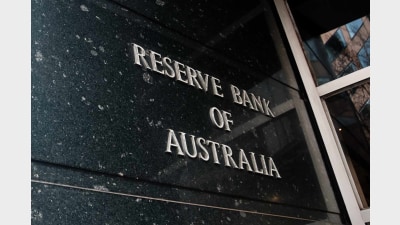Pursuing simple adjustments to achieve equity


Many legislative and regulatory inconsistencies exist as impediments to delivering equity for women in terms of retirement incomes but, as Blake Briggs reports, some simple measures can be easily deployed to close gap.
Our retirement system was not designed with women in mind. Why this is the case, when women make up more than half of our population and 46 per cent of the labour market, is difficult to comprehend – but it’s most likely a factor of history.
Compulsory superannuation came into existence 23 years ago when the employment and social landscape looked very different from today’s. There are many more contributing factors, from the historical connection between superannuation and paid employment, to the system’s origin in male dominated industries and a perception that a male breadwinner’s responsibilities include providing for their family in retirement.
Society has since evolved beyond many of these 'norms’, however Australia’s superannuation system, that emphasises continuous workforce participate, has not evolved in line with community changes and expectations.
Recent ANZ analysis shows that female Australians, on average, earn $295 per week less than their male counterparts. Astonishingly, this results in around $700 000 less in retirement savings for women in retirement.
Research conducted by Rice Warner Actuaries for the Financial Services Council (FSC) demonstrates that an average 25 year old woman entering the workforce today will have a personal savings gap of $108,000 by the time she retires around 40 years later. This is the gap between the retirement savings she needs to have an adequate retirement income, including age pension, and the savings she will likely have.
These retirement outcomes for Australian women are not acceptable to many in the industry.
Employers in the finance and superannuation industries have been amongst the first to decide that more needs to be done to address the unequal retirement outcomes between male and female employees.
Rice Warner and ANZ have both recently implemented important measures to achieve equality in retirement outcomes, including:
- Higher superannuation guarantee (SG) contributions for female employees;
- Free financial advice for employees with low balances;
- Specialist financial planning services for female employees; and
- Payment of SG on unpaid parental leave and employer sponsored paid parental leave.
But there is more to be done to better enable other employers to support their employees achieve adequate retirement savings and to remove barriers in current legislation and policies.
A common message the FSC has heard from member organisations who are contemplating such policies is that developing and implementing measures to support female employees is unnecessarily complex and expensive due to legal barriers.
The Sex Discrimination Act 1984 (SDA) creates barriers to addressing inequality. Unhelpfully, the Human Rights Commission has offered different solutions under different provisions in the SDA to allow positive packages to be implemented.
The supportive role of the Human Rights Commission should not be understated; however the legal framework creates complexity and uncertainty that would deter an 'average’ employer from attempting to do the right thing.
Employers in the finance and superannuation industries have been amongst the first to decide that more needs to be done to address the unequal retirement outcomes between male and female employees.
For example, some organisations have secured exemptions from the law under section 44 of the legislation, whilst others have been able to implement 'special measures’ under section 7D(1) of the same legislation. Inconsistency and complexity in how the law applies to similar proposals is one example of the barriers that employers face that may deter them from undertaking such reforms in their workplace.
The Senate Economics Committee has recently commenced an inquiry into the economic security of women in retirement. The FSC is working with members to develop solutions to these legal barriers to present to the inquiry so that more Australian companies can follow the example set by Rice Warner and ANZ.
Paid parental leave & caring responsibilities
There is a greater role for the Commonwealth in addressing gender inequality in the superannuation system. The expanded terms of reference to the Tax Discussion Paper presents a broader opportunity to review unequal gender outcomes in our retirement system.
The clearest gap in our superannuation system that drives unequal outcomes is that superannuation contributions are not paid on the Commonwealth’s Paid Parental Leave (PPL) scheme. The PPL scheme is undoubtedly modest, providing 18 weeks pay at minimum wage, no superannuation component and tightly means tested.
A 'break’ in employment for primary carers of children has a substantial impact on retirement outcomes. Each break in a woman’s employment in her mid-20s leaving her at least $20,000 worse off when she retires.
The current PPL scheme has a significant cost to the Commonwealth of $1.6 billion per annum; however expanding the means-tested scheme to include the superannuation guarantee on the minimum wage would likely create additional cost of only $150 million per annum.
The FSC views this reform as an important first step before moving to a parental leave scheme that better reflects an individual’s true income. In the meantime employers themselves can take up the challenge of continuing the superannuation payments that a carer would have otherwise received had they not taken on their caring responsibilities.
The FSC is pleased to advise this is a reform that the FSC itself has recently implemented for all our employees, male and female, who take parental leave.
Low Incomes Super Contribution
The Low Income Superannuation Contribution (LISC) is a politically contentious, but very important, reform to address inequity in the superannuation system.
The LISC compensates individuals for the 15 per cent contributions tax paid by individuals on their superannuation contributions when their adjusted taxable income is less than $37,000 per annum.
Were those individuals not compelled to contribute 9.25 per cent of their income to superannuation, they would pay no income tax on the first $18,200 of their income, and 19 per cent tax on the next $18,800 of income, up to the $37,000 threshold.
It was a long-standing flaw in the superannuation system that low-income earners would pay a higher or comparable rate of tax on their compulsory contributions than they would if that money was paid to them as income.
The FSC is concerned that the repeal of the LISC acts as a disincentive for the 3.6 million low income Australian employees to work and save. From 2017, 2.1 million of those who will lose access to the LISC are women.
Removing the LISC for young people is significant as it undermines the benefits of compounding long-term growth that is central to the superannuation system achieving its goal of reducing reliance on Government retirement benefits. Contributions by young people early in their careers are as important to improving self-sufficiency in retirement as contributions made by mature individuals later in life who have achieved higher incomes.
Removing the LISC for a young, low-income employee would undermine their superannuation savings at retirement by as much as $30,000 and increase their reliance on the age pension.
The FSC is continuing to advocate for the retention of the LISC and, in conjunction with the broader reforms the FSC is proposing, would be an important element in achieving equal retirement outcomes for men and women.
Equal treatment of women in Australia’s workplace has been a slow and frustrating process for many Australians. The superannuation system has, unfortunately, been a laggard on this issue.
The FSC hopes that agreement to drive the reforms outlined in this article can earn widespread support across the industry and we can jointly call for better retirement outcomes for all Australians.
Blake Briggs is senior policy manager for Superannuation at the Financial Services Council.
Recommended for you
High risk, high return assets will become dangerous options for superannuation funds under the Federal Government’s planned $3 million superannuation changes, writes Brad Twentyman.
Economic policy can no longer ignore the macroeconomic impacts of Australia's superannuation system and the emerging policy implications, writes Tim Toohey.
In an age where climate concerns and social consciousness dominate headlines, it’s no surprise that investors are increasingly seeking investments that align with their values, writes Simon O’Connor.
How profit-for-member superannuation funds can embed 'commerciality with a heart' and marry a member-first culture with commercial outcomes.














Why is the most obvious solution overlooked?
Quite simply, male life expectancy is approximately 81 years, and female life expectancy is approximately 84 years. If males are expected to retire at age 67 and have 14 years post-work, then for equity women should retire at age 70 and also look forward to 14 years post-retirement.
Those extra 3 years of contributions will compensate for time that they have taken off earlier.
In most cases, women currently retire around the same time as a (typically) older male partner, meaning that they already aren't working until the same age. Obviously this shorter investment timeframe is also a significant factor in why they may not have earned as much in their super.
Add new comment